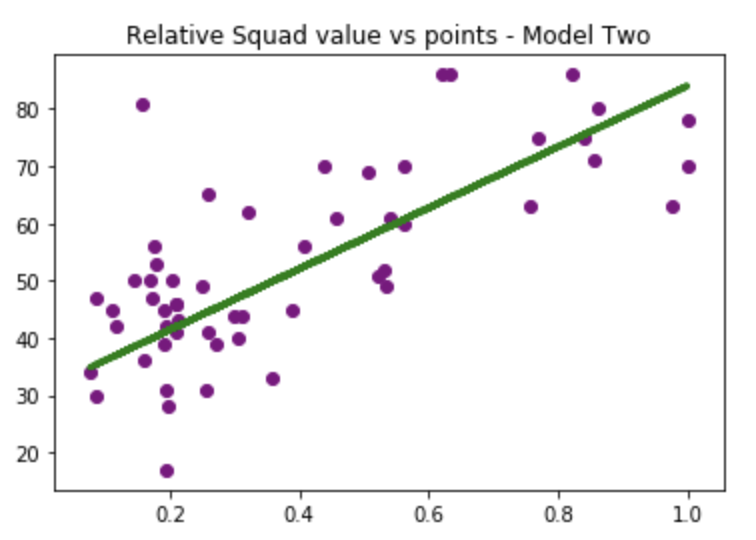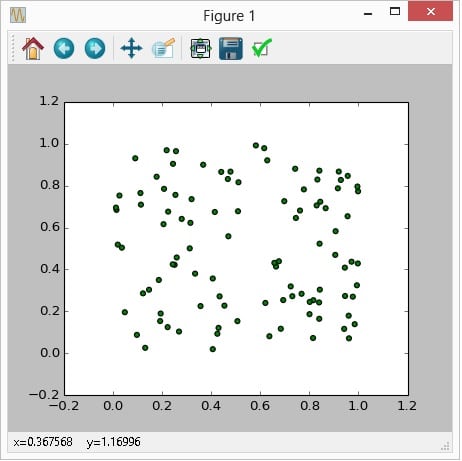

The () function creates a scatter plot and displays it in the output. Matplotlib Scatter Plot - scatter() Function This plot is mainly used to observe the relationship between the two variables. The pyplot module provides functions for explicitly creating figures that include interactive tools, a toolbar, a tool-tip, and key bindings: pyplot.figure Creates a new empty Figure or selects an existing figure pyplot. The required positional arguments supplied to ax.scatter() are two. Similar to the plot method, they take at least two arguments, the x- and y-. Scatter plots of (x,y) point pairs are created with Matplotlibs ax.scatter() method. The matplotlib scatter() function plots a scatter plot as output. Scatter plots are drawn with the Axes.scatter method. Note that this online course has a chapter dedicated to scatterplots.
#Python plot scatter code#
Several tools allow to build one in python, this section provides code samples for Seaborn, Matplotlib and Plotly for interactive versions. Each data point is represented as a circle. If True, the infinite points are plotted in the graph. A scatter plot displays the relationship between 2 numeric variables. This argument takes floating-point numbers or arrays as values.Įdgecolors : The edge colors of the marker are passed in this argument. Linewidths : The linewidth of the marker edges are passed in this argument. 0 is used for transparent, and 1 is used for opaque. This vmin and vmax are used along with the default norm to map the color array c to the color map array cmap.Īlpha : This is an optional argument. Vmin, vmax : This argument can only be used when the norm parameter is not used. The floating-point range is normalized between 0 to 1. This function is used to normalize the data in the c parameter.

Norm : This parameter is used only when the c parameter is passed with the floating-point number. By using this parameter, the floating value is converted to the respective color. However, the marker style can be modified by passing the marker style in this parameter.Ĭmap : This parameter is used only when the c parameter is passed with floating values. By default, the marker style is kept as ‘o’. Marker : This parameter specifies the marker style used in the scatter plot. This parameter takes a list of elements as values. The array consisting of colors is passed as a value to this argument. For example, the marker size can be changed using this argument.Ĭ : This is an optional argument. This argument can take float values or arrays as values. A scatter plot is used for depicting relationship between two variables and can be drawn using ().Example code is given for the. Note that you will need to ensure that the Seaborn library is installed as part of your Python development environment before using it in Jupyter or other Python IDE.S : This argument is optional. You are able to display the legend quite easily using the following command: plt.legend() Scatter plot in Python with Seabornįor completeness, we are including a simple example that leverages the Seaborn library (also built on Matplotlib). Plt.title('Scatter example with custom markers') Adding a legend to the chart We can easily modify the marker style and size of our plots. Plt.ylabel('Cost') Change the marker type and size To represent a scatter plot, we will use the. The dots in the plot are the data values. Plt.title('Simple scatter with Matplotlib') Scatter plot in Python is one type of a graph plotted by dots in it. Matplotlib offers a rich set of capabilities to create static charts. Aside from the different features available in plt.plot and plt.scatter, why might you choose to use one over the other While it doesnt matter as much for. my_(x='Duration', y='Cost', title= 'Simple scatter with Pandas', label= ).legend( bbox_to_anchor= (1.02, 1)) Rendering a Plot with Matplotlib Note the usage of the bbox_to_anchor parameter to offset the legend from the chart. We used the label parameter to define the legend text. My_(x='Duration', y='Cost', title= 'Simple scatter with Pandas', c='green') Displaying the scatter legend in Pandas We can easily change the color of our scatter points.

Here’s our chart: Changing the plot colors my_(x='Duration', y='Cost', title= 'Simple scatter with Pandas') Once we have our DataFrame, we can invoke the ot() method to render the scatter using the built-in plotting capabilities of Pandas. My_data = pd.om_dict() Drawing a chart with Pandas We’ll define the x and y variables as well as create a DataFrame. We will start by importing libraries and setting the plot chart: import matplotlib.pyplot as plt Plt.scatter(x_col_data,y_col_data, marker = 'o') Python scatter plots example – a step-by-step guide Importing libraries When we are using labled data like a pandas dataframe, we can shorten having to type the dataframe variable multiple times by using a different plotting syntax. This assumes that you have already defined X and Y column data: import matplotlib.pyplot as plt
#Python plot scatter how to#
Here’s how to quickly render a scatter chart using the data visualization Matplotlib library.


 0 kommentar(er)
0 kommentar(er)
